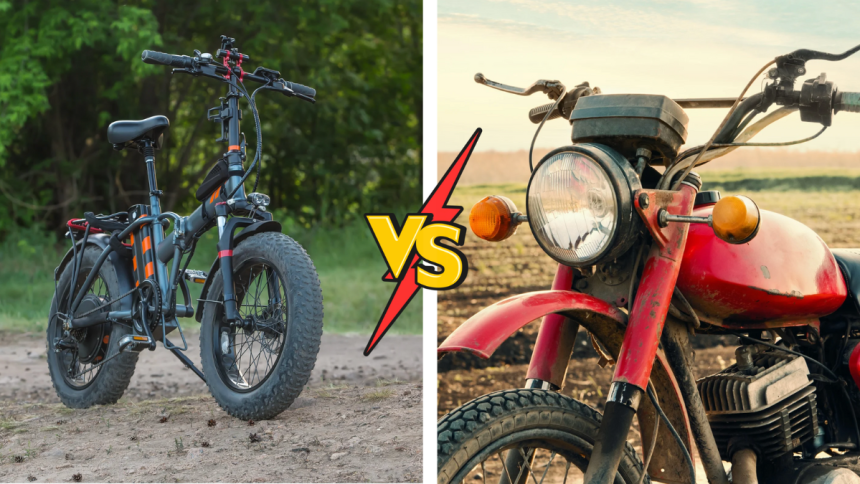Choosing between an ebike and a traditional bike can feel tricky, but it really comes down to your lifestyle and needs. Are you looking for a little extra boost on hills or longer rides? Or do you prefer the classic, no-battery experience of pedaling on your own power? Both options offer great benefits, and the best choice depends on how, where, and why you ride.
In this blog, we’ll break down the key differences in a simple, clear way to help you find the perfect fit for your next adventure, whether it’s across town or across the countryside.
Understanding the Core Differences: Ebikes vs Traditional Bikes
Before diving into comparisons, let’s clear up what actually sets these two types of bikes apart at their fundamental level.
Technology Behind Electric Bikes
The heart of any ebike is its motor and battery system. Modern electric bikes typically feature either hub motors (built into the wheel) or mid-drive motors (positioned near the pedals). These motors assist when you pedal, essentially giving you a boost that makes riding easier. Models such as an electric trike for adults also use similar technology, offering added stability along with motorized support.
Most ebikes offer multiple assistance levels, letting you choose how much help you want. Some feature throttle controls that provide power without pedaling, while others only assist when you’re actively pedaling (pedal-assist). The best electric bikes combine reliable motors with smart features like integrated lights, smartphone connectivity, and regenerative braking.
Traditional Bike Mechanics and Design
In contrast, traditional bicycles rely solely on human power. Their design has been refined over decades, focusing on efficiency through lightweight frames, responsive braking, and effective gear systems.
The simplicity of traditional bikes is actually one of their greatest assets. With fewer components to fail, traditional bikes advantages include reliability, easier maintenance, and a more direct connection to the road or trail. Plus, they typically weigh 15-20 pounds less than their electric counterparts.
Now that we understand the basic differences, let’s explore how these translate to real-world performance.
Performance Comparison: Power vs Simplicity
The performance differences between these bike types can significantly impact your riding experience.
Speed and Distance Capabilities
Ebikes in the US typically fall into three classes with different speed capabilities:
- Class 1: Pedal-assist up to 20 mph.
- Class 2: Throttle-controlled up to 20 mph.
- Class 3: Pedal-assist up to 28 mph.
Most ebikes can travel between 20-80 miles on a single charge, depending on assistance level, terrain, and rider weight. For seniors or those with mobility challenges, an electric trike for adults provides the stability of three wheels with motorized assistance, making cycling accessible to nearly everyone.
Traditional bikes have no technical speed limit, your fitness becomes the limiting factor. While most casual cyclists average 10-14 mph, experienced riders can maintain speeds comparable to Class 1 ebikes.
Terrain Adaptability
One of the greatest benefits of electric bikes is their ability to flatten hills. That brutal climb that once left you gasping becomes manageable, opening up routes that might otherwise be inaccessible.
However, traditional bikes excel in predictability and handling. They respond more directly to rider input and typically offer better maneuverability at low speeds, something worth considering if you’ll be navigating crowded urban environments.
When deciding between these options, don’t overlook the health impacts of each choice.
Health and Fitness Benefits
Contrary to popular belief, both bike types offer significant health benefits, they just do so differently.
Physical Benefits of Traditional Cycling
Traditional cycling provides an excellent cardiovascular workout while building lower-body strength. Riders typically burn 400-800 calories per hour, depending on intensity. The consistent resistance also benefits joint health and improves coordination.
Studies consistently show that regular cyclists enjoy lower rates of heart disease, improved lung function, and better mental health, all while putting minimal impact on joints.
Exercise Value of Electric Bikes
The old idea that riding an ebike is “cheating” has been left behind. In fact, many ebike riders still get a solid workout, just with a little help when they need it. Because ebikes make longer and more frequent rides easier, many people actually end up getting more exercise than they would on a traditional bike.
This is especially helpful for those returning to fitness, managing health conditions, or simply wanting to enjoy riding without feeling limited. Both traditional bikes and ebikes offer great health benefits, but the right choice often comes down to what fits your lifestyle best.
Practical Considerations for Daily Riders
Daily use reveals significant differences between these bike types that might not be apparent during a test ride.
Commuting Experience
Showing up to work drenched in sweat isn’t ideal for most professionals. Ebikes allow commuters to arrive relatively fresh while still getting some exercise. They also reduce commute times dramatically, often cutting travel time by 30-50% compared to traditional bikes on the same route.
Storage and Security Challenges
The extra weight of ebikes (typically 45-70 pounds) makes them challenging to carry upstairs or load onto vehicle racks. Their higher value also makes them bigger targets for theft, potentially requiring more robust security measures.
Traditional bikes, weighing 15-30 pounds, are much easier to transport, store, and secure. This difference becomes particularly important for apartment dwellers or those with limited storage space. Cost considerations represent another crucial factor when choosing a bicycle.
The Bottom Line on Your Riding Future
Both ebikes and traditional bikes bring unique benefits, and the choice isn’t about which is better, it’s about what fits your lifestyle. Traditional bikes are great for fitness, simplicity, and low costs. They’re perfect if you enjoy a hands-on, no-fuss ride. Ebikes, on the other hand, make longer rides easier, tackle tough terrain, and support riders with different needs.
As tech improves, they’re becoming more accessible and versatile. In the end, the best bike is the one that keeps you riding and enjoying every mile.
FAQs on Finding the Right Fit for Your Ride
1. How do you tell if a bike is the right fit?
If you’re buying a bike online and wondering how do you measure yourself for a bike from afar, simply measure the length of your inside leg (with your shoes on) and subtract two centimeters from that measurement. This will give you the stand-over height of the bicycle that is right for you.
2. What are the disadvantages of ebikes?
Electric bicycles require regular maintenance to ensure they work properly. Electronic components and batteries can be expensive to maintain and repair. Battery failures, motor problems, and repairs to electronic control systems can represent significant additional expenses.
3. Is there a big difference between a 500W and 750W ebike?
Torque is the rotational force that helps your e-bike climb hills and accelerate from a stop. Generally, 750w motors provide significantly more torque than 500w motors. This makes 750W e-bikes more effective for steep inclines and carrying heavier loads.
Lynn Martelli is an editor at Readability. She received her MFA in Creative Writing from Antioch University and has worked as an editor for over 10 years. Lynn has edited a wide variety of books, including fiction, non-fiction, memoirs, and more. In her free time, Lynn enjoys reading, writing, and spending time with her family and friends.















